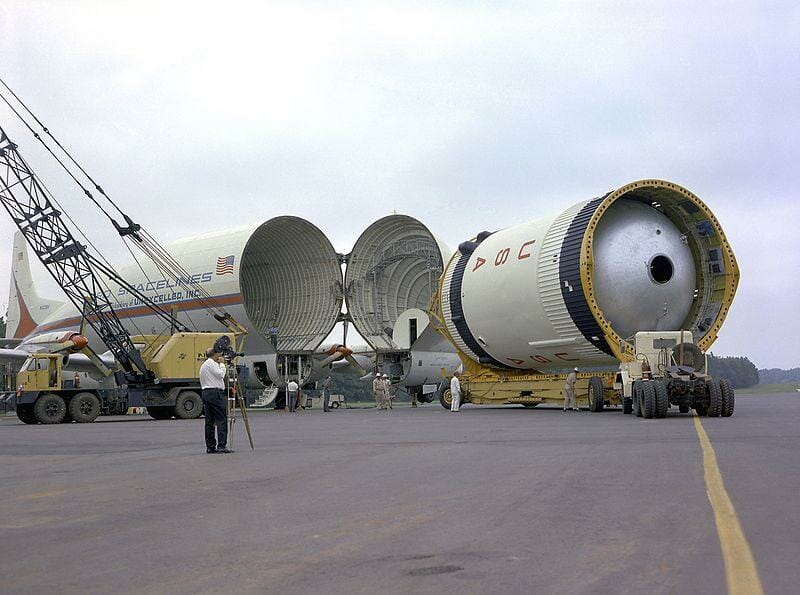Planes age differently than most other things. While a 10 year old car is really not in its prime anymore, an airplane at that age is still considered pretty young. And technology is not progressing that fast – our beloved Boeing 737 took off for the first time in 1967 and it is still going strong. But, even in this context, the largest NASA’s cargo plane seems a bit old – it can trace its roots to a legendary WW2 bomber.

NASA definitely needs a good cargo plane. Not only rocket modules are big in diameter, but also laboratory equipment has to be carried from one place to another, sometimes in one piece. That is why Aero Spacelines made a Pregnant Guppy, which took off for the first time in 1962. It was a ballooned Boeing 377 Stratocruiser and looked pretty much like a whale.

While the Pregnant Guppy was very useful in the initial stages of the Apollo program, it soon became clear that an airplane that was a bit longer would be preferred. And so it was built using the Boeing C-97 Stratofreighter and the Boeing 377 Stratocruiser as a basis. Interestingly enough, the C-97 was actually a derivative of the famous B-29 Superfortress bomber, which was the one dropping the atomic bombs in Japan during WW2.

The Super Guppy took off for the first time in August 1965. It was exceptionally large, although it resembled the Pregnant Guppy a lot. It had a distinctive balloon-shape cross section, because only the upper part of the fuselage was enlarged. The Super Guppy was easily large enough to fit separate parts of rockets as well as large modules from the Apollo and subsequent programs. It was so useful that soon it was decided that some other C-97 bombers could be transformed and one Pregnant Guppy was used up as well. In total, 5 Super Guppy airplanes were built.

You probably have seen the Airbus Beluga and Boeing Dreamlifter cargo airships. They are somewhat similar to the Pregnant Guppy and Super Guppy and it is not a coincidence. At some point, Airbus bought the rights to the Super Guppy and used a couple of these airplanes for its own logistic operations. And Boeing was also interested – after all, it was Boeing’s aircrafts that were used to create the guppies.

Nowadays, only one Super Guppy is still flying and it belongs to NASA. It was originally registered somewhere around 1983, but it is still a very old design. C-97 Stratofreighter is out of production since 1958. Super Guppy is powered by four turboprop engines. It is actually quite unusual to see a plane with propellers carrying the latest NASA inventions today, but it is dependable, so why would they retire it?
The wingspan of the Super Guppy is 47.6 metres, length – almost 44 metres. It is not its size, however, that is so impressive, but its capacity – it can carry 24.7 tons of weight. Despite being quite old, it is probably going to remain in service for the foreseeable future because it is just that useful. Who knows, maybe it will still be flying when humanity will decide to lay its foot on Mars.




